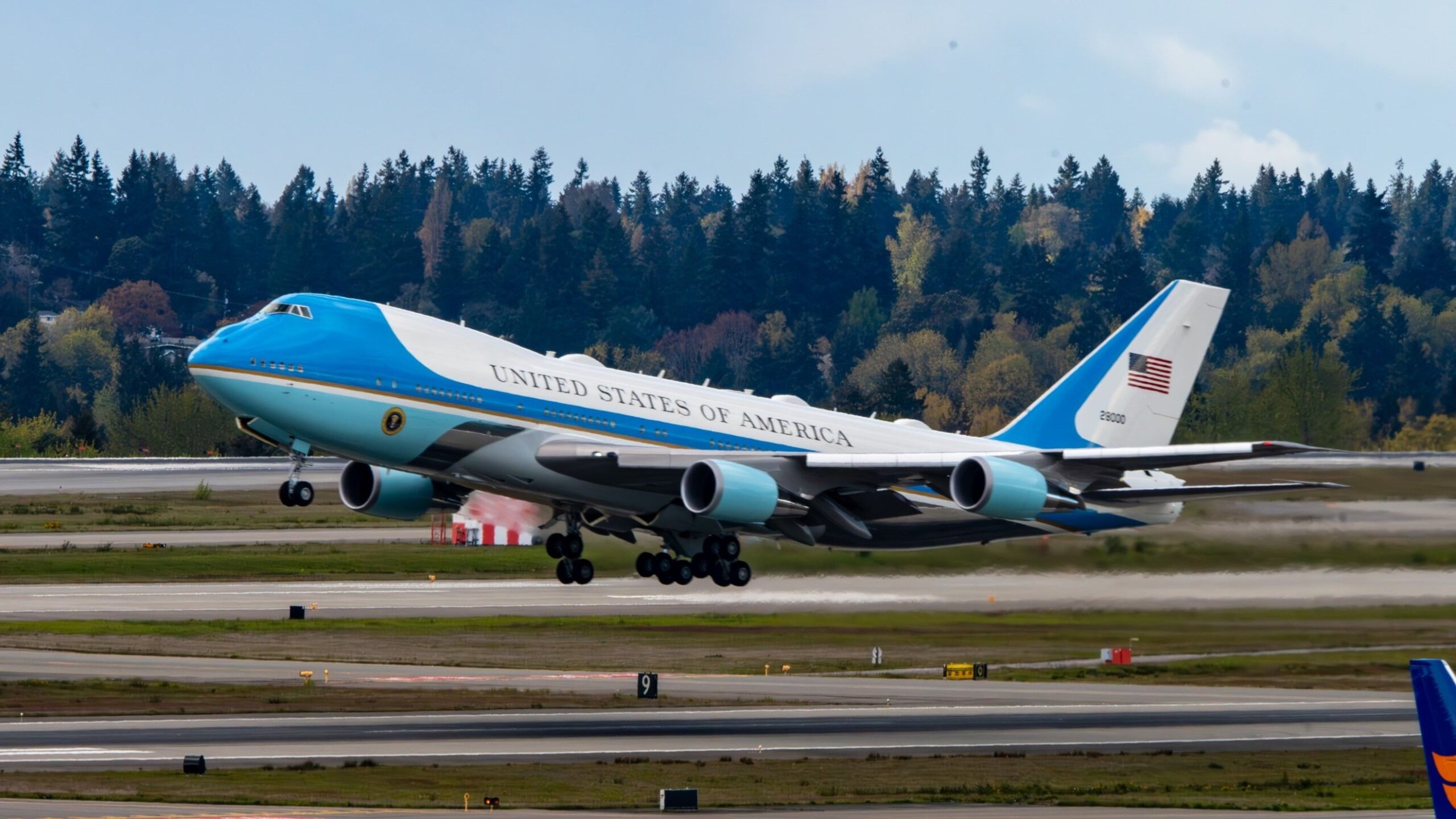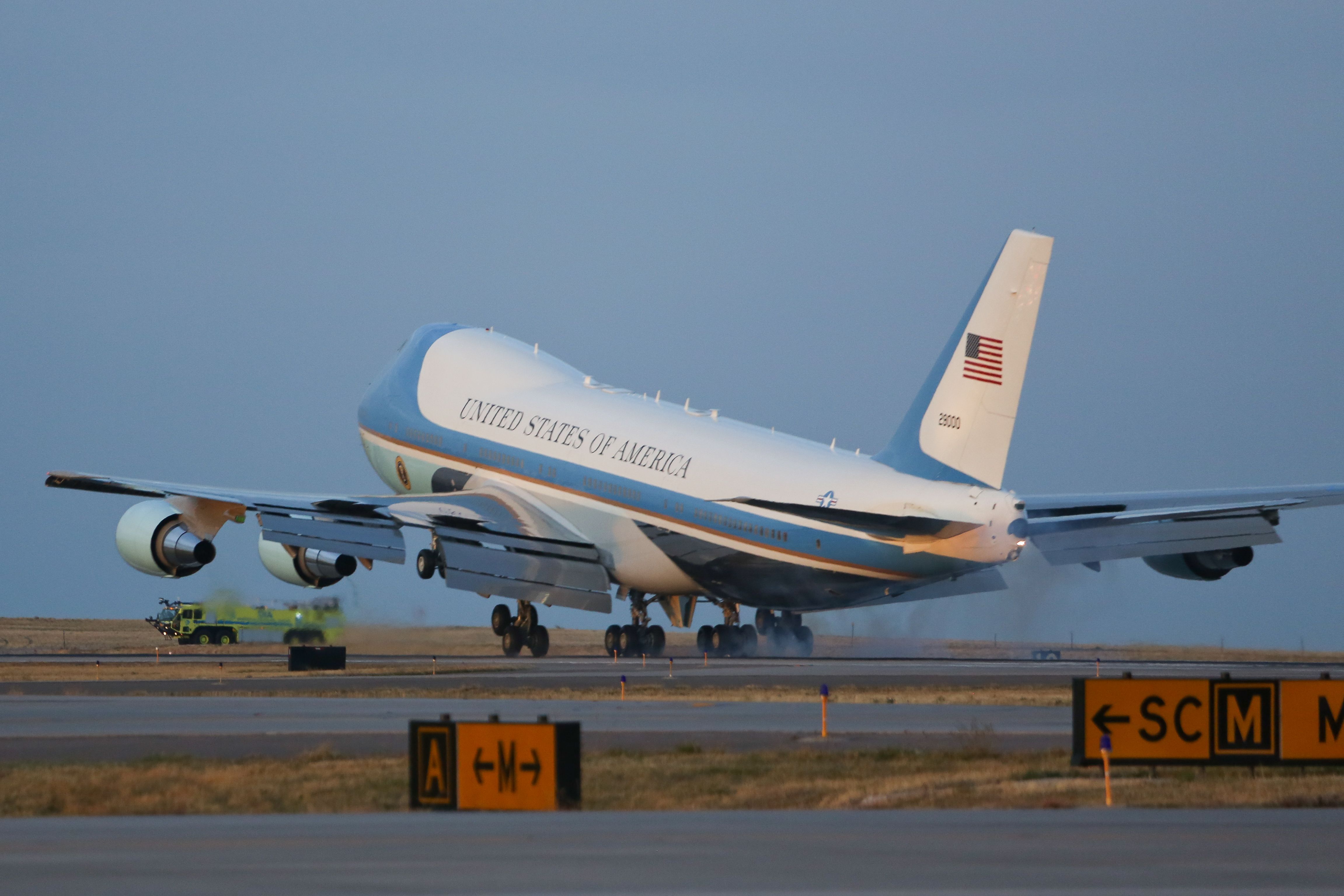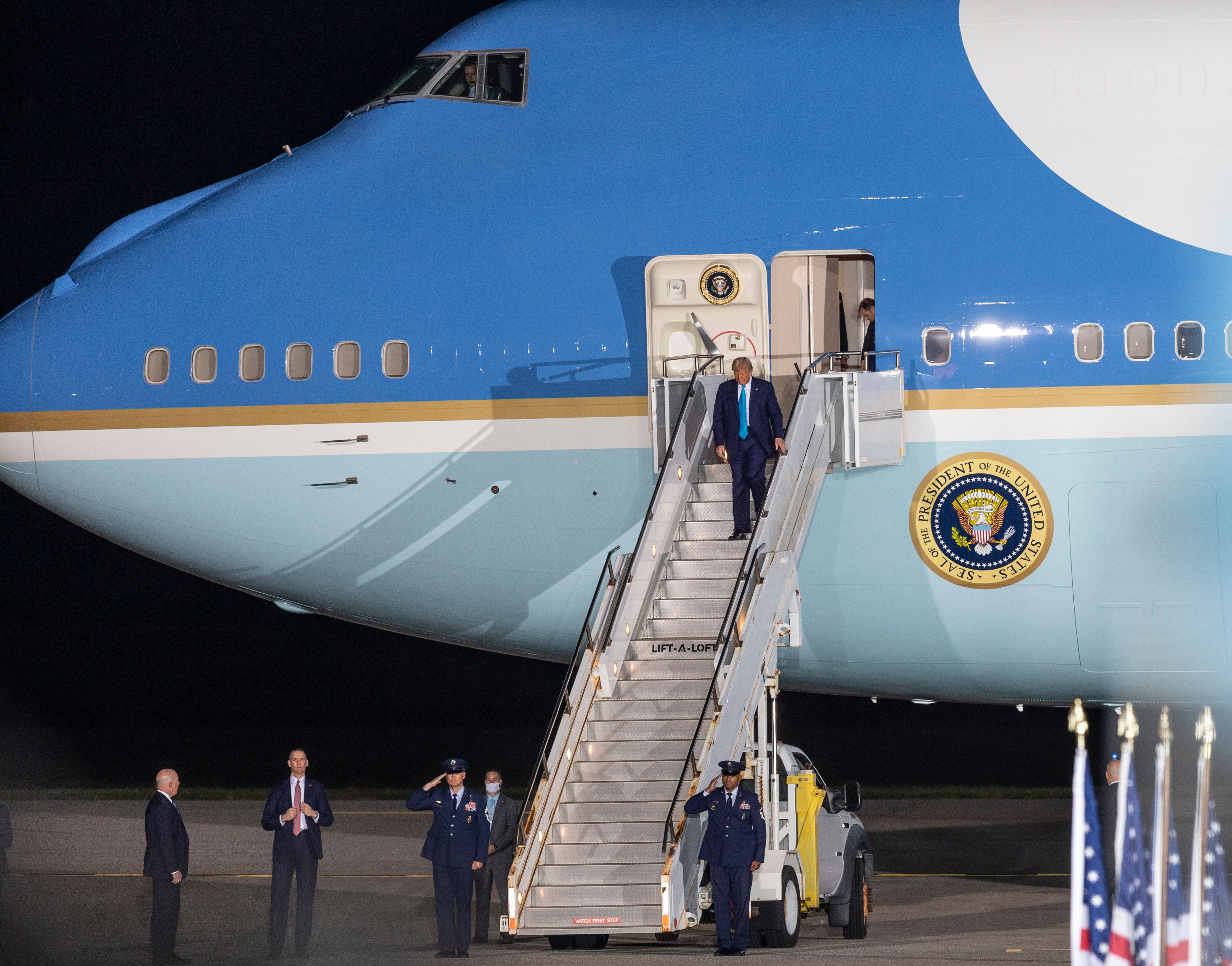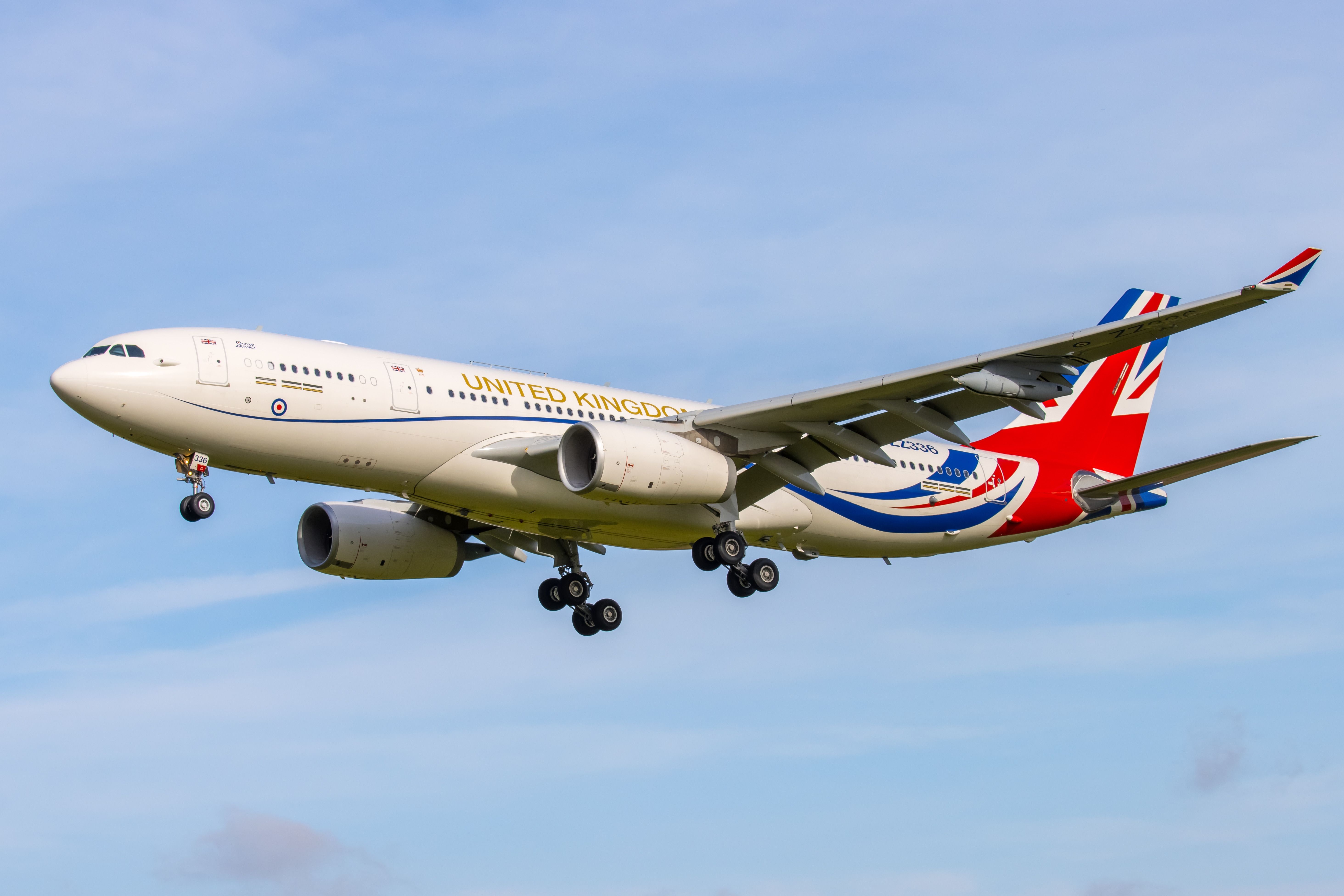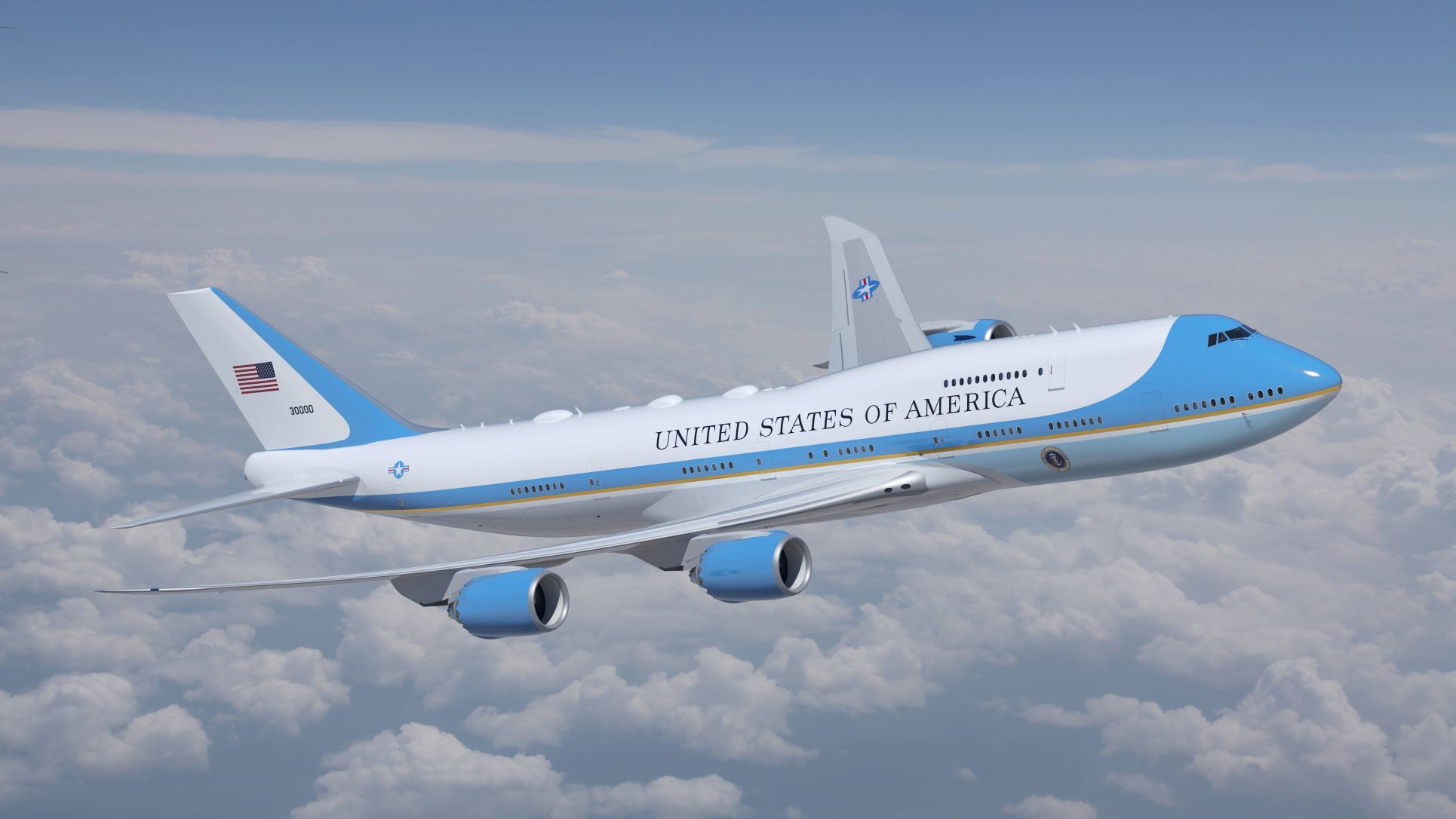Although Air Force One is technically the call sign of any US Air Force-operated aircraft carrying the President of the United States, it’s commonly used to refer to the modified Boeing 747-200B, often utilized for state visits and government summits.
The luxurious quadjet, designated VC-25, boasts a sprawling layout, including a private residence, meeting rooms, a medical facility, and room to accommodate Secret Service agents. Despite its crucial role in transporting a head of state and other US officials, the VC-25 does not carry any weapons, instead focusing heavily on defense.
Anti-missile defenses
Much of the aircraft’s actual defense capabilities and avionics are kept strictly under wraps; the VC-25 is known to come installed with multiple infrared countermeasures capable of redirecting air-to-air and ground-to-air missiles.
The USAF operates AN/ALQ-204 Mator jammers on the aircraft, an infrared light-based system to disrupt missile sensors, blocking the heat signal of the VC-25’s engines, as well as standard chaff and flares that are capable of misguiding a targeted missile when deployed. According to the USAF, the VC-25 also features an AN-AAR54(V) missile launch warning receiver to report and track missile threats by zeroing in on an exhaust signature for in-flight detection.
Photo: Denver International Airport
Should those systems fail, the aircraft is covered in heavy shielding across its fuselage, preventing electromagnetic damage from a range of blasts, including a doomsday-level nuclear explosion.
Encryption systems
Following 9/11, an open line of communication between the President and the ground became even more essential when in the air. Though getting up there in age, the VC-25 hosts an expansive range of electronics for communication, ranging from phones to radio to computer connections to reach government staff on the ground. All line availability is encrypted to ensure security, limiting the possibility of a hostile force intercepting highly confidential information.
And on hostile forces, VC-25 is also fitted with scramblers to jam the radar of any nearby aircraft in case of traveling over dangerous airspace, protecting against air attacks and keeping the jet’s location anonymous.
Built for the long-haul
Are you feeling hungry? When in service, the aircraft can hold up to 2,000 meals in its two galleys, plus plenty of clean water. If operating at max capacity, the aircraft can stay airborne for up to three days before supplies begin to dwindle. Fully fuelled, the aircraft can remain in the air for up to 15 hours (provided there are no other mechanical issues); however, further flight would require refueling via its in-air refueling connection with one of the USAF’s tankers.
Photo: lev radin | Shutterstock
Security risk is further minimized by the aircraft’s lack of need for airport facilities, other than a runway, of course. The jet is equipped with retractable stairways, the scene of many high-profile trips (pun intended), and a self-contained baggage loader, making the process of taking off as easy as possible, regardless of the mission.
Any article on the VC-25 wouldn’t be complete without a mention of its comprehensive onboard medical facilities. A doctor is always present onboard to attend to an emergency, as well as a fully stocked pharmacy, an expansive collection of medical supplies, and even an operating table. It’s safe to say whether you’ve got a case of the mid-air jitters and need a Valium or are experiencing cardiac arrest, no one onboard Air Force One need worry if they’re feeling unwell at 35,000 feet.
Traveling in Style
The systems offered by Air Force One may be considered overkill when compared to aircraft utilized by other heads of state. While many also offer missile defense capabilities, meeting rooms, and radar jammers, such as South Korea’s Code One, some governments instead opt for less opulent and low-key transportation methods.
The United Kingdom’s Royal Air Force Voyager did not feature secure communication features or a missile detection system until a 2015 refit; the Airbus A330 MRTT also now offers conference facilities and a dressing room for royal and government VIPs.
Photo: Rob Wade | Shutterstock
Germany’s A350-900-based “Konrad Adenauer” is similarly set up for long-haul operations, with passenger bedrooms, state-of-the-art communication systems, radar technology, and Defensive capabilities. The aircraft entered into service in 2022, replacing the aging Airbus A340-300, also titled Konrad Adenauer, which was relegated to government transport. Germany’s government pulled the jet from service altogether in August following several repeated breakdowns that led to foreign minister Annalena Baerbock scrapping a trip to Oceania.
US-ally, Israel is currently in the process of setting up its VIP transport for President Benjamin Netanyahu, though the ongoing Israel-Hamas war could push back its expected entry into service. Known as the Wing of Zion, the VIP-configured Boeing 767 has faced widespread criticism from Israeli government ministers due to its nearly $200 million price tag; however, Netanyahu’s cabinet has defended the expense as a necessity to ensure safe transport for the President and his wife. The aircraft, like Israeli flag carrier El Al, includes missile defense systems and an in-flight meeting room, with its expansive capabilities garnering it the nickname “Israeli Air Force One.”
Incoming retirement
With the aircraft slowly getting up there in age, the US government already has plans to retire the jet in favor of the newer Boeing 747-8I, adapted into the VC-25B. The plane is not expected to come into service until 2027, at the earliest, following years of government and developmental setbacks.
Photo: United States Air Force
Despite ex-President Donald Trump’s dreams of a patriotic red, white, and blue color scheme, President Joe Biden has confirmed the new aircraft will instead be a slightly darker shade of the robin’s egg blue used on Air Force One aircraft since the era of President John F. Kennedy.
According to Defense News, the decision was not a political snub at the former Republican leader; it was based on Federal Aviation Administration (FAA) and USAF research that suggested the darker blue could add heat in certain climates and would require further testing, setting the program back even further.
Like its predecessor, the VC-25B will also feature self-defense capabilities, enhanced communication features, avionics systems, and a medical facility.
What are your favorite features of the President’s VC-25? Let us know in the comments.
Sources: The Aviationist, How Stuff Works, Defense Media Network, Defense News

